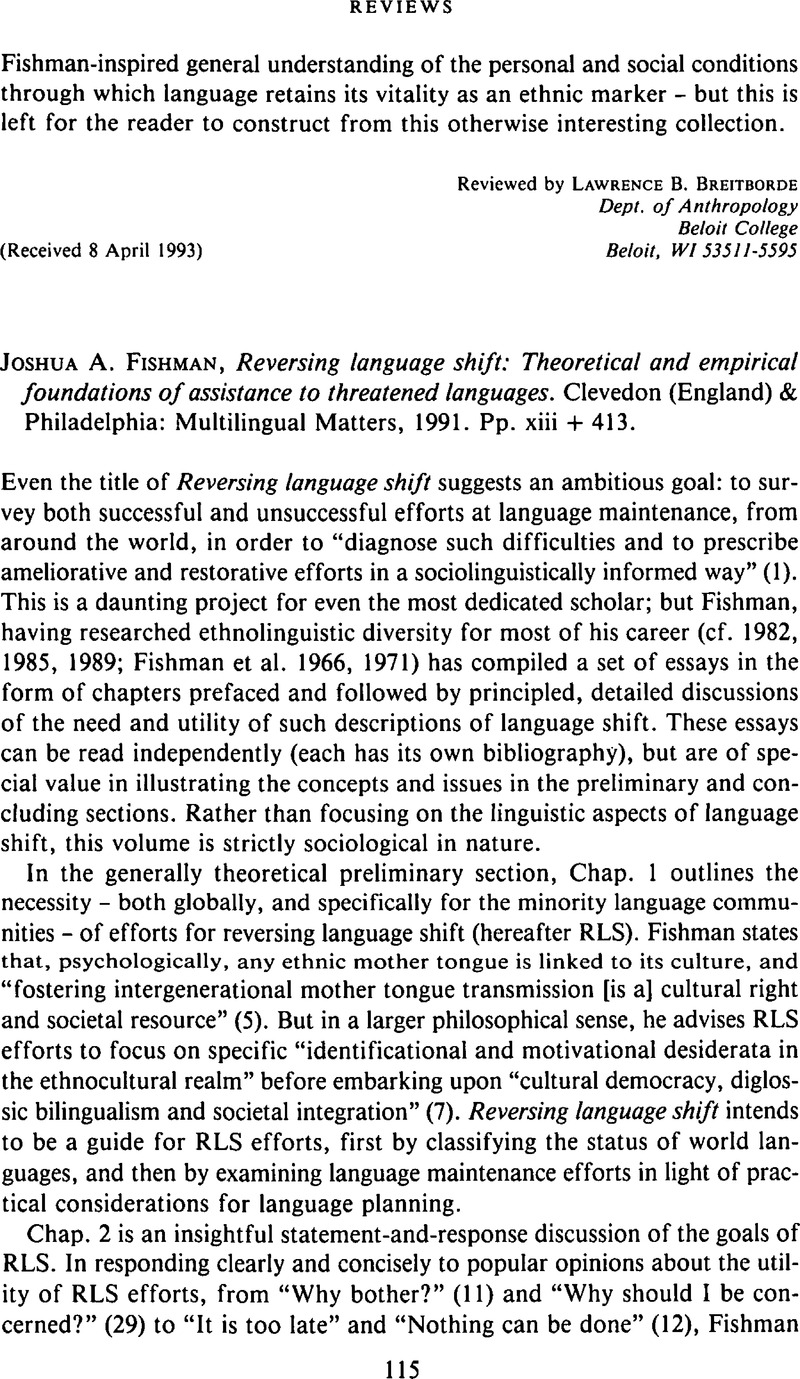Crossref Citations
This article has been cited by the following publications. This list is generated based on data provided by Crossref.
Danyliuk, Ivan
and
Shykovets, Sergiy
2019.
PSYCHOLOGICAL PECULIARITIES OF LANGUAGE USE AMONG UKRAINIAN MIGRANTS IN POLAND SPEAKING UKRAINIAN AND RUSSIAN LANGUAGES.
Bulletin of Taras Shevchenko National University of Kyiv. Series “Psychology”,
p.
32.
Amaral, Luiz
2020.
Estratégias para a revitalização de línguas ameaçadas e a realidade brasileira.
Cadernos de Linguística,
Vol. 1,
Issue. 3,
p.
01.
Aguiar, Lisiane Machado
and
Pohlmann, Jan
2020.
Macuxi, Wapixana e Pomerano.
Cadernos de Linguística,
Vol. 1,
Issue. 3,
p.
01.
Оспанов, Е.Т.
and
Иманғали, Ө.
2025.
АҒЫЛШЫН ТІЛІНІҢ БАСЫМ ТІЛ РЕТІНДЕ ҚАЗАҚСТАНДАҒЫ БІЛІМ БЕРУДЕ БАСҚА ТІЛДЕРГЕ ӘСЕРІ ҚАНДАЙ?.
BULLETIN SERIES "PHILOLOGICAL SCIENCES",
Vol. 91,
Issue. 1,
Lam, Kai-Chee
Kahar, Nur Khasrina
Abdul Wahab, Hamidah
and
Ting, Hie-Ling
2025.
Penggunaan Bahasa oleh Etnik Melanau Mukah.
Jurnal Bahasa,
Vol. 25,
Issue. 1,
p.
179.


